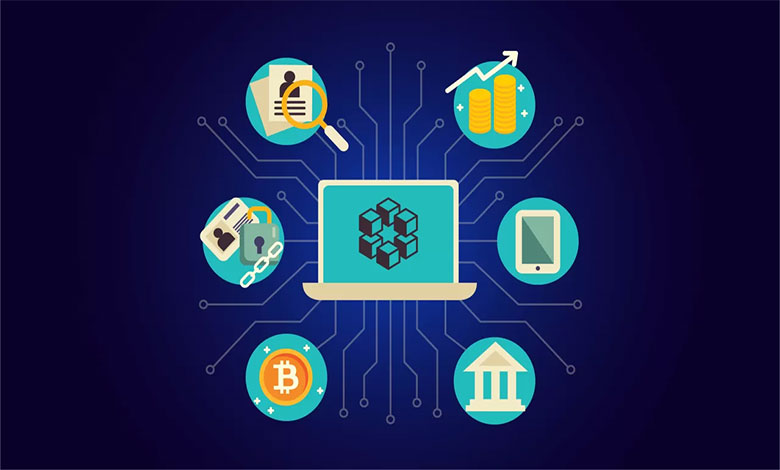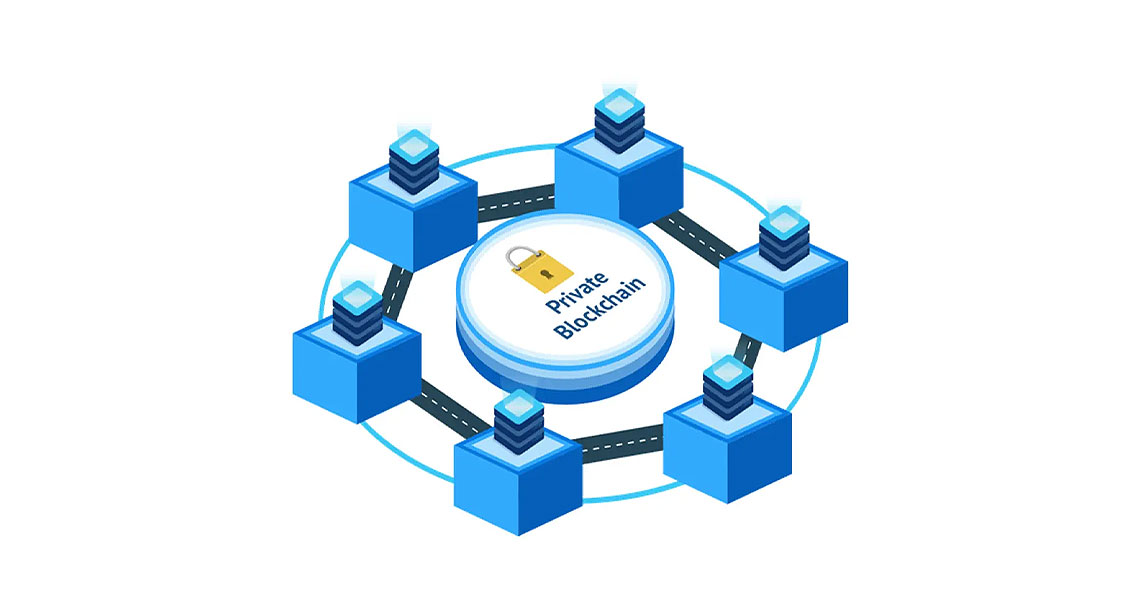
Blockchain: The Fundamental Infrastructure of Cryptocurrencies
Blockchain is the fundamental infrastructure of cryptocurrencies. In today’s world, where digital technologies are rapidly advancing, one of the greatest innovations that has had a profound impact on the global economy is the technology of blockchain. Blockchain is not only the main infrastructure behind digital currencies such as Bitcoin and Ethereum, but it is also being used as a revolutionary technology in many other industries. With the emergence of cryptocurrencies, blockchain has become one of the most essential technologies that enables a decentralized economy while providing security, transparency, and efficiency.
 Blockchain: The Fundamental Infrastructure of Cryptocurrencies
Blockchain: The Fundamental Infrastructure of Cryptocurrencies
This article examines the concept of blockchain, how it works, its security and transparency, the different types of blockchains, and its applications beyond digital currencies. We also address the challenges that this technology faces and analyze the future of blockchain in various industries.
What is Blockchain?
Blockchain is known as a distributed ledger that securely and transparently records all transactions or data. Unlike traditional systems where data is stored in a central database, blockchain stores information in a distributed manner among all network users (called nodes).
Blockchain works by recording every new transaction in a block that is linked to a chain of previous blocks. Each block contains information about the transactions, timestamps, and a cryptographic signature known as a hash, which connects the blocks together and forms an immutable chain.
This technology, through its unique features, enables the storage and transfer of information in a decentralized manner without needing to trust a central authority. This has led blockchain to be recognized as the underlying infrastructure for cryptocurrencies and other technological applications.
Differences Between Blockchain and Traditional Databases
One of the most significant differences between blockchain and traditional databases is the distributed nature and decentralization. In traditional databases, all data is stored on a central server or database, managed by a specific organization or entity. Although this centralized structure may be efficient, it is vulnerable to issues such as data manipulation, cyber attacks, and single points of failure.
In contrast, in blockchain, information is stored in a distributed manner among all nodes in the network. This means that no single entity can control or alter the data. All nodes have access to the ledger and can verify the accuracy of transactions. This structure makes blockchain significantly more secure and transparent compared to traditional databases.
How Does Blockchain Work?
Blockchain technology operates based on principles of cryptography and decentralization. To better understand how blockchain functions, we explain the main steps in detail:
1. Creating a Transaction
- When a user intends to send digital currency or data to another user, a transaction is created. This transaction contains information such as the sender’s address, the recipient’s address, and the amount of digital currency. This information is then broadcast to the blockchain network for validation by other nodes.
 Blockchain: The Fundamental Infrastructure of Cryptocurrencies
Blockchain: The Fundamental Infrastructure of Cryptocurrencies
2. Validating the Transaction
- Before being added to the blockchain, every transaction must be validated. This validation is carried out through a consensus process, whereby network nodes agree on the legitimacy of the transaction. These nodes may use various mechanisms such as Proof of Work or Proof of Stake to validate transactions. In the Proof of Work mechanism (as used by Bitcoin), miners must solve complex mathematical problems to validate transactions and add them to the blockchain.
3. Creating a Block
- After the transactions are validated, they are grouped into a new block. Each block consists of a number of validated transactions arranged in chronological order. Additionally, each block contains the hash of the previous block, which connects the blocks together.
4. Adding the Block to the Chain
- Once the new block is created, it is added to the chain of previous blocks. This chain of blocks, known as the blockchain, is stored permanently and immutably. Once a block is added to the blockchain, it can no longer be modified or deleted. This feature enhances the security and transparency of the system.
5. Distributing the Ledger
- One of the key features of blockchain is the distributed nature of the ledger. A copy of the blockchain is distributed to all nodes in the network. This means that every node has a complete copy of all transactions ever executed. This makes it exceedingly difficult to commit fraud or alter data, as any changes would need to be reflected in every copy of the ledger—an practically impossible task.
Types of Blockchain
Blockchains are classified into various types based on their structure and usage. Each type of blockchain has its own set of features and applications, differing according to the needs and uses.
1. Public Blockchain
- Public blockchains allow anyone to join the network and participate in transaction validation. Bitcoin and Ethereum are examples of public blockchains. In this type of blockchain, anyone can access the network and view and validate transactions.
2. Private Blockchain
- Unlike public blockchains, private blockchains restrict network access and transaction validation to specific individuals or organizations. This type of blockchain is commonly used within organizations and companies that require greater control over the network. Hyperledger is one example of a private blockchain.
3. Consortium Blockchain
- Consortium blockchains are managed by a group of organizations or entities. In this type of blockchain, decisions and transaction validations are made collectively by a group of companies or institutions. Consortium blockchains are suitable for joint projects among companies or across different industries.
Security and Transparency in Blockchain
Security and transparency are among the key features of blockchain that have made it the preferred infrastructure for digital currencies. Here, we discuss how blockchain ensures security and transparency.
1. Cryptography
- Blockchain uses complex cryptographic algorithms to protect transactions and data. Each block contains a hash that cryptographically connects all the information in that block to the previous block. This encrypted linkage makes it practically impossible to alter or tamper with a block without affecting all subsequent blocks.
2. Immutability
- One of blockchain’s unique features is its immutability. Once a transaction is added to the blockchain, it cannot be altered or deleted. This feature turns the blockchain into a trustworthy and permanent ledger.
3. Transaction Transparency
- All transactions executed on the blockchain are publicly visible. This transparency allows anyone to verify the accuracy of transactions and the overall performance of the network. Although the identities of blockchain users remain anonymous, the transactions themselves are publicly recorded and traceable.
4. Consensus Mechanisms
- Consensus mechanisms such as Proof of Work and Proof of Stake play a critical role in validating transactions and securing the network. These mechanisms ensure that only legitimate transactions are added to the blockchain, thereby minimizing fraud or cyber attacks on the network.
Applications Beyond Cryptocurrencies
Although blockchain is famous as the infrastructure for digital currencies, its applications extend far beyond the financial world. Below are some of the applications of blockchain in various industries.
 Blockchain: The Fundamental Infrastructure of Cryptocurrencies
Blockchain: The Fundamental Infrastructure of Cryptocurrencies
1. Smart Contracts
- Smart contracts are one of the most important applications of blockchain. These contracts execute automatically and enforce the obligations of the parties without the need for intermediaries. Smart contracts can be used in various industries such as real estate, insurance, and legal services.
2. Electronic Voting Systems
- Blockchain can be used in electronic voting systems. Through blockchain, the integrity and transparency of election results can be ensured, thereby reducing the risk of fraud during elections.
3. Supply Chain Management
One more application of blockchain is in the supply chain. Companies can use blockchain to conduct transparent and traceable processes in the production and distribution of goods. This technology enables products to be tracked from the manufacturing stage to the final consumer.
4. Healthcare Industry
- In the healthcare industry, blockchain can help securely and privately store patient medical records. This technology facilitates the sharing of medical information between doctors and hospitals without the risk of unauthorized access.
Challenges of Blockchain
Despite its numerous advantages, blockchain faces its own set of challenges that must be addressed.
1. Scalability
- One of the main challenges of blockchain is its scalability. Currently, blockchain networks such as Bitcoin and Ethereum can only process a limited number of transactions per second, leading to slower transaction speeds and higher fees. These limitations necessitate the development of scalability solutions such as the Lightning Network in Bitcoin or Ethereum 2.0.
2. Energy Consumption
- Consensus mechanisms like Proof of Work require heavy computational processing and solving complex mathematical problems, resulting in high energy consumption. This high energy consumption has become one of the environmental challenges of blockchain, and solutions are needed to reduce energy usage.
3. Legal and Regulatory Challenges
- Many countries still lack comprehensive laws for the use of blockchain and digital currencies. The absence of clear regulations can create ambiguity in the application of these technologies and expose investors and companies to legal risks.
Conclusion
Blockchain has emerged as a revolutionary technology in the digital world, serving as the backbone for cryptocurrencies and enabling a wide range of applications in various industries. By ensuring security, transparency, and decentralization, blockchain has improved financial systems and many other processes. However, blockchain faces significant challenges, such as scalability and energy consumption, that must be resolved to achieve broader adoption.
This technology has the potential to impact not only the financial sector but also various other fields, including smart contracts, supply chain management, and electronic voting systems. Blockchain is changing the way we interact with digital data and transactions and will undoubtedly play an important role in the future of the global economy.


